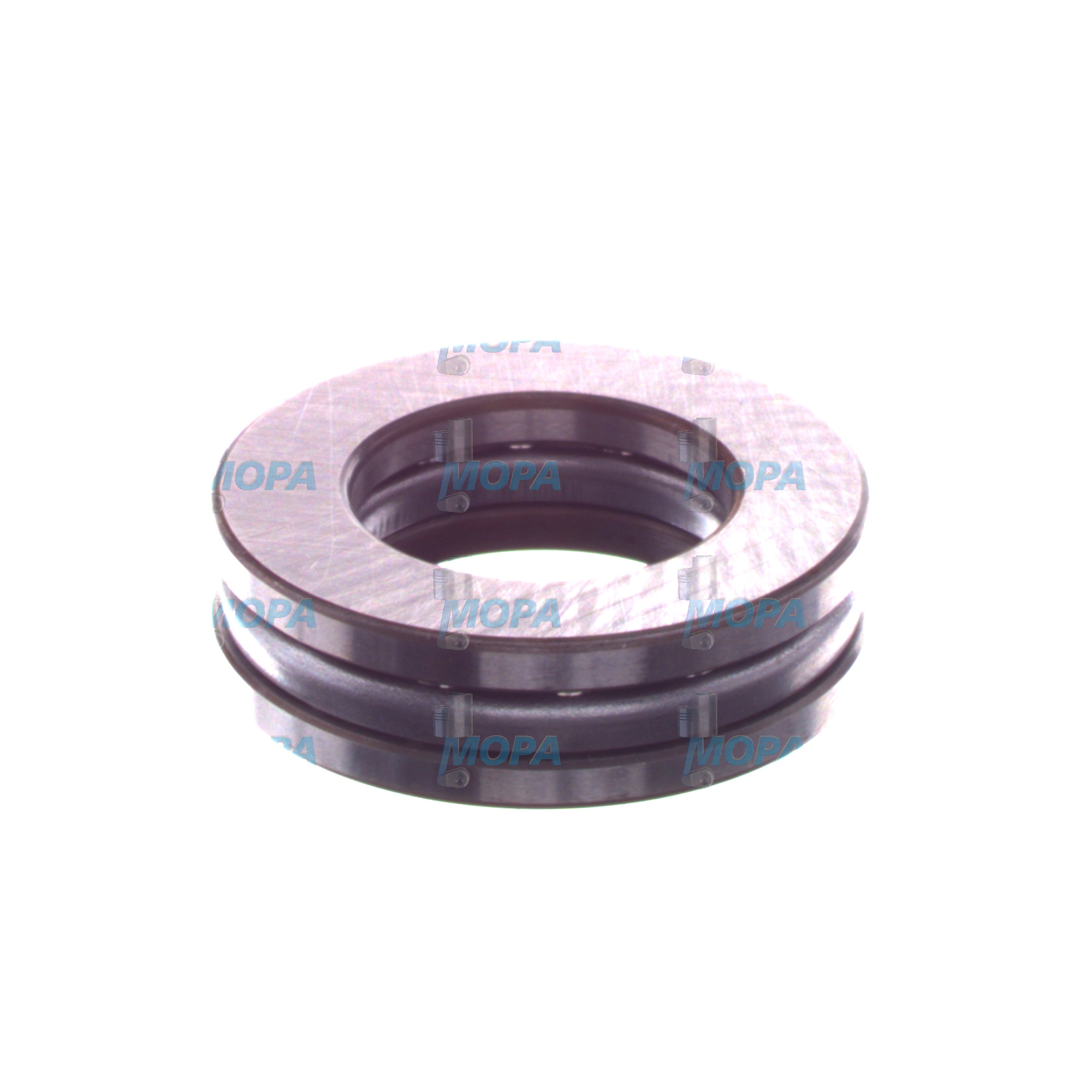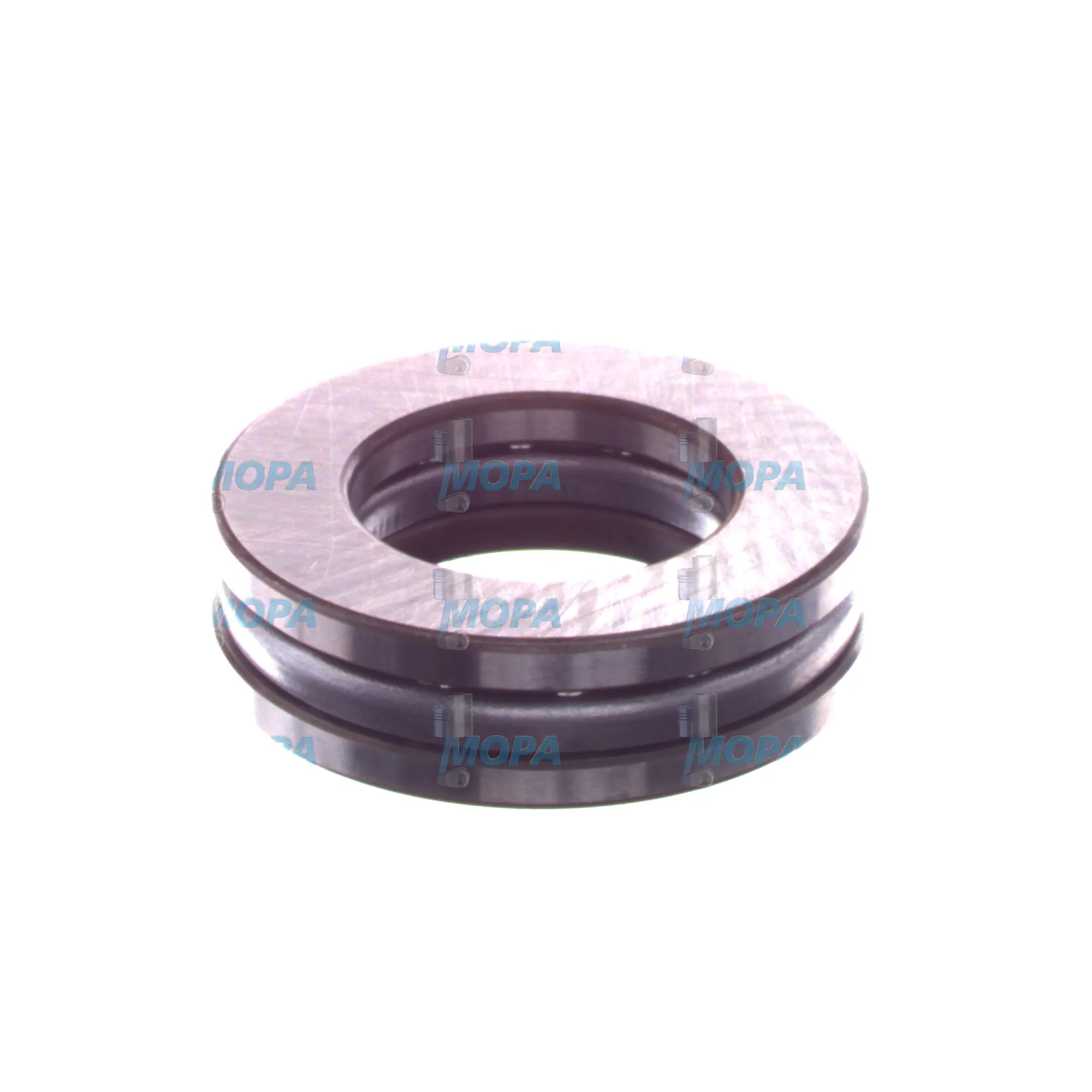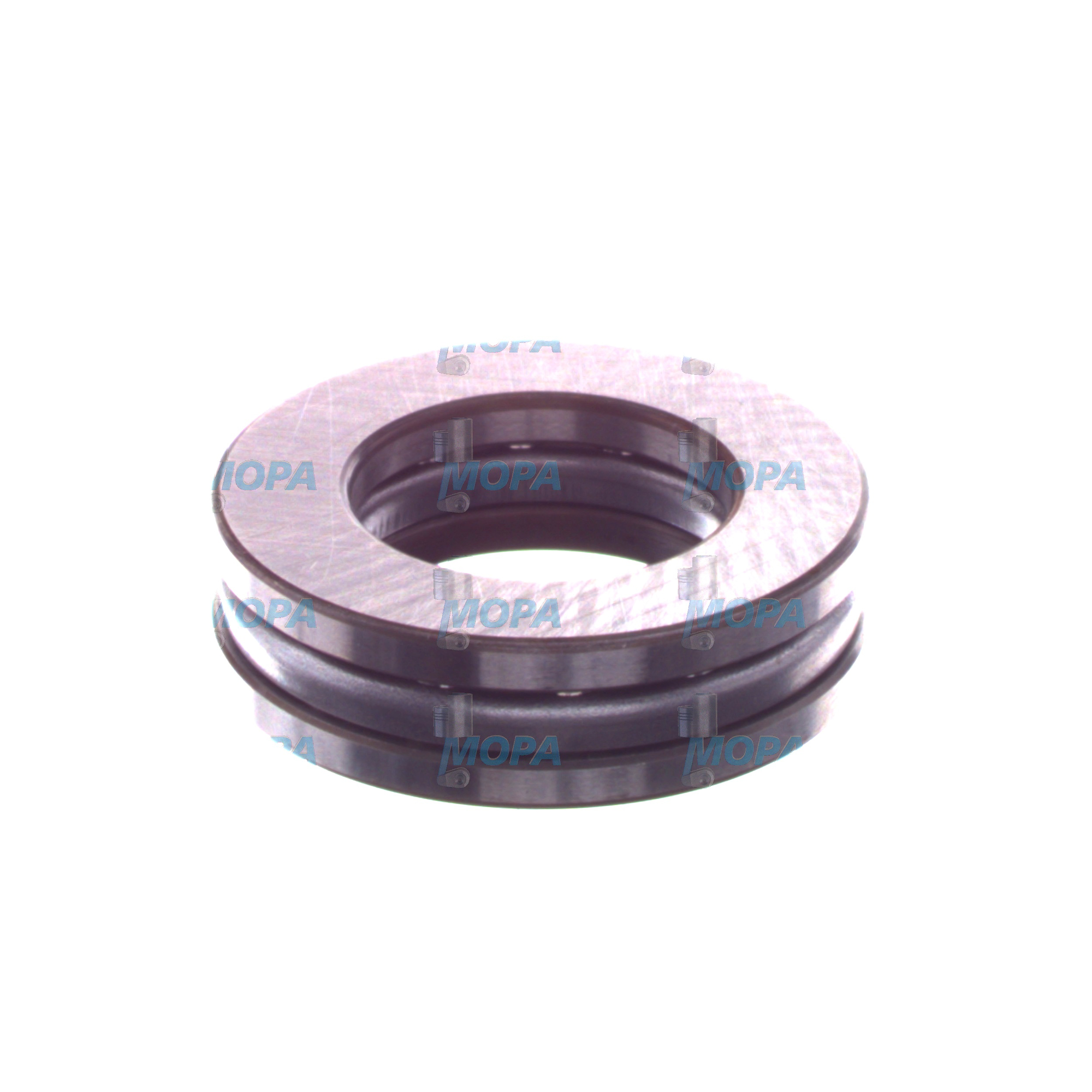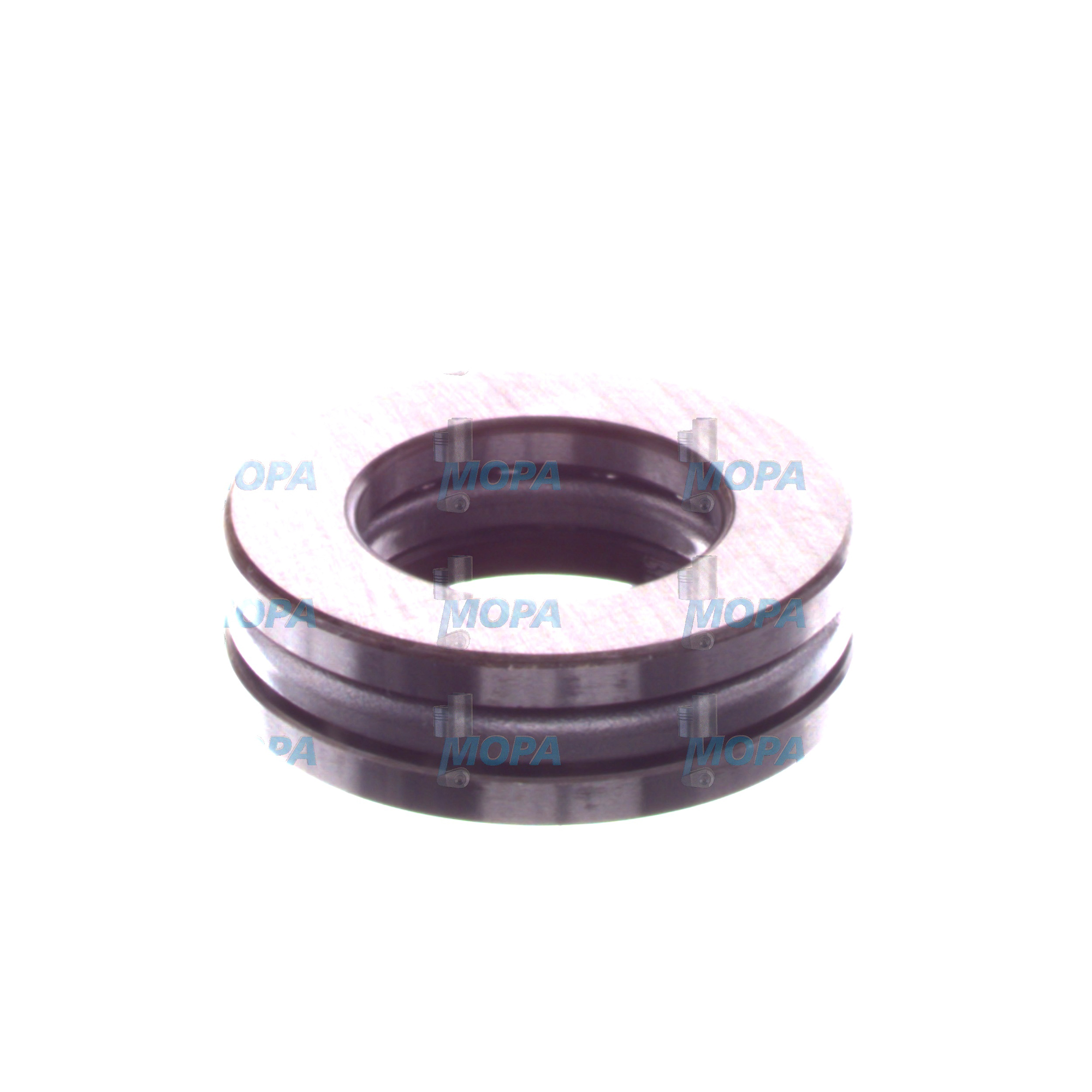BALL THRUST BEARING applications in engine bearings
Bearings are precision components that support rotating and oscillating parts inside an engine, minimizing friction while carrying radial and axial loads. Within the article category “Bearings,” you will find solutions that keep crankshafts centered, gear trains aligned, camshafts running true, and auxiliary drives efficient. From compact gensets to large two-stroke propulsion plants, the right bearing architecture safeguards power density, efficiency, and service life.
Among these solutions, the BALL THRUST BEARING is a dedicated design for axial load paths. While main and connecting-rod bearings predominantly manage radial forces via hydrodynamic films, thrust-capable designs prevent shafts from walking axially under thermal expansion, gear mesh forces, or propeller thrust reaction transmitted through gearboxes. In diesel engine and marine engine environments, correct bearing selection and condition are decisive for uptime and predictable maintenance cycles.
Technical function of bearings in engines and the role of a BALL THRUST BEARING
Engine bearings perform two fundamental tasks: they separate moving surfaces with a controlled film of lubricant or rolling contact, and they carry loads with precisely engineered clearances and stiffness. Journal bearings (e.g., main and big-end) create an oil wedge that supports the crankshaft at high speed, turning viscous shear into a low-friction “fluid bearing.” Rolling-element bearings, by contrast, use balls or rollers to localize contact, reducing starting friction and offering predictable load ratings where hydrodynamic regimes are not ideal.
A BALL THRUST BEARING is optimized for axial loads. It consists of two grooved washers (shaft and housing race), a cage, and precision balls. In a diesel engine or marine engine assembly, you typically encounter ball thrust bearings in accessories and drivetrain interfaces that impose axial force: gear-driven auxiliaries, vertical-shaft pumps, alternators with axial preload, or intermediate shafts in reduction gears. Unlike radial deep-groove ball bearings, a BALL THRUST BEARING is not intended to carry significant radial load; it is selected when the axial load spectrum dominates and speeds are moderate to high with controlled alignment.
Functionally, the bearing converts axial load into Hertzian point contacts between balls and raceways. Material selection (through-hardened or case-hardened steel), raceway geometry, ball grade, cage design, and lubricant chemistry define performance. Proper preload prevents skidding and ensures consistent contact angles. For high-duty cycles, surface finish quality and cleanliness are critical to resist micropitting and false brinelling. When specified as OEM parts, the BALL THRUST BEARING will match the engine builder’s tolerances for shaft shoulder heights, housing fits, and lubrication channels, preserving the intended load path and temperature profile.
- · Precise axial load capacity for gear and shaft endplay control.
- · Minimal starting friction; stable friction under steady load.
- · Defined contact geometry for predictable life calculations (L10).
- · Tight tolerances and surface finishes for low vibration.
- · Compatible with oil or grease lubrication in diesel and marine duty.
- · Integrates with seals and spacers for robust shaft assemblies.
- · Available as OEM spare parts aligned to engine-maker specs.
BALL THRUST BEARING in diesel engine and marine engine contexts
In propulsion and power-generation plants, axial forces arise from helical gear meshes, thermal drift of long shafts, and hydraulic thrust in pumps. A correctly sized BALL THRUST BEARING stabilizes axial position, preserving gear backlash, preventing rotor rubs in pumps and compressors, and keeping couplings within axial alignment limits. In marine engine auxiliary modules, it helps protect seals from excessive axial displacement, reducing leakage risk and extending service intervals. Selection focuses on static and dynamic axial ratings, misalignment tolerance, limiting speed, lubricant type, and contamination control—especially important on vessels where airborne salt and fuel/oil vapors can accelerate corrosion or varnish formation.
Why bearings—especially a BALL THRUST BEARING—are critical for reliable engine operation
Bearings set the baseline for mechanical efficiency and uptime. Excessive wear or incorrect axial control triggers a cascade of issues: elevated frictional losses, rising oil temperature, gear tooth distress due to misaligned contact patterns, and seal failures caused by axial pump-out. If a BALL THRUST BEARING degrades, shafts can shift, impellers can contact housings, and couplings experience unexpected axial loads. In crankshaft systems, improper thrust control may cause crank scrubbing at counterfaces, leading to metallic debris in the lubrication circuit and accelerated wear of other bearings.
Typical failure drivers include inadequate lubrication film thickness, contamination, improper preload, and deviations in race geometry. Early indicators—noise, axial vibration spikes, metal particles in used-oil analysis, or rising current draw on driven equipment—should prompt inspection. Proactive replacement with parts matching the engine builder’s fit and performance specification is essential to prevent progressive damage and unscheduled downtime.
Advantages of OEM spare parts suitable for bearings and BALL THRUST BEARING
Using OEM spare parts for Bearings ensures the axial and radial load paths designed by the engine manufacturer are maintained without compromise. Dimensional fidelity, heat treatment profiles, cage materials, and raceway geometries are aligned with the engine’s shaft shoulders, carrier housings, and lubrication scheme, reducing setup time and risk during overhauls.
For purchasers and technical managers focused on total cost of ownership, the benefits are clear: validated fatigue life, predictable change-out intervals, and stable performance under the specific thermal and contamination regimes of diesel engine and marine engine operation. Documentation, batch traceability, and conformity to the engine’s maintenance manuals streamline compliance with class and internal QA procedures. Selecting BALL THRUST BEARING OEM parts preserves preload settings, limiting in-service adjustments and preventing collateral wear on couplings, seals, and gear teeth.
How OEM parts support performance, reliability, budget, and service life
OEM spare parts come with application-matched metallurgy and finishing processes that resist micropitting and corrosive attack. They provide consistent axial stiffness and low runout, keeping vibration levels within limits. This translates into fewer unplanned stops, efficient fuel burn due to reduced parasitic losses, and fewer secondary component replacements—protecting both budget and asset availability across the maintenance cycle.
MOPA as your partner for OEM spare parts Bearings and BALL THRUST BEARING
MOPA supplies OEM spare parts for Bearings with a focus on speed, quality, and security in trade for diesel and gas engines. Our team sources BALL THRUST BEARING OEM parts aligned to the engine maker’s specifications, supports cross-referencing and technical clarification, and delivers with reliable lead times to minimize laytime and downtime. From single-item rush orders to complete overhaul kits, we combine stringent quality checks with robust logistics and documentation, giving purchasing and technical departments the confidence to execute maintenance on schedule.
Conclusion — BALL THRUST BEARING and the value of OEM spare parts
Bearings are foundational to engine efficiency and uptime, and a correctly specified BALL THRUST BEARING is essential wherever axial loads must be controlled. Choosing OEM spare parts suitable for Bearings secures fit, function, and service life—helping diesel and marine engines run cleaner, longer, and more efficiently.





